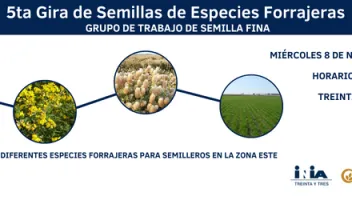Ramularia leaf spot management alternatives in barley optimizing the use of fungicides for its control:Doctoral thesis abstract. [Alternativas de manejo de ramulariosis en cebada optimizando el uso de fungicidas para su control:Resumen de tesis doctoral.].

ABSTRACT.- Ramularia collo-cygni (Rcc) is the causal agent of Ramularia leaf spot (RLS). The main management tool is the use of foliar fungicides, the impact of which on cereal safety is unknown. Therefore, the aim of this thesis was to optimise the management of ramulariosis in barley and to minimise fungicide residues in grain. -- RESUMEN.- Ramularia collo-cygni (Rcc) es el agente causal de ramulariosis. La principal medida para su manejo es la utilización de fungicidas foliares cuyo impacto en la inocuidad del grano es desconocido.

